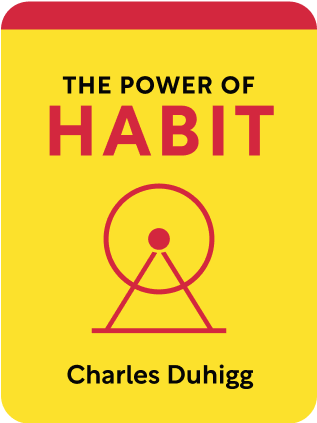

This article is an excerpt from the Shortform book guide to "The Power of Habit" by Charles Duhigg. Shortform has the world's best summaries and analyses of books you should be reading.
Like this article? Sign up for a free trial here .
How do advertisers manipulate customers into buying their products? How do they use cues to trigger purchasing habits in your subconscious?
In his book The Power of Habit, Charles Duhigg explains how advertisers influence customers to buy their products by learning about and manipulating their purchasing habits. They achieve this through sales promotions, rearranging shelves, or tracking your habits online.
Continue reading to learn how advertisers use the psychology of habit to sell more products.
How Advertisers Exploit You
According to Duhigg, advertisers deliberately play on your brain’s reliance on automatic routines to influence your purchasing habits. They know that you’re more likely to buy things that you’re familiar with to avoid making conscious decisions every time you go shopping (because your brain wants to conserve energy.) This is why they try so hard to figure out your preferences—for example, by tracking website cookies when you shop online or your reward cards when you shop offline. These methods allow them to send you customized deals that appeal to your predictable nature and get you back in their stores.
| Retailers Trick You Into Buying More Than You Need Psychologists warn that your brain’s tendency to operate in autopilot mode when shopping may save you time but it doesn’t save you money. Retailers manipulate their environments to accommodate your habitual purchases and trick you into making impulsive and unnecessary buying decisions. For example, a shop may encourage you to add the same brand of toothpaste to your basket every week—without considering the 10 tubes you already have in your cupboard—by placing a large sale sign for the toothpaste right by the payment area. Seeing that your favorite toothpaste is on sale, you excitedly add it to your cart and pay for it before you can consider the wisdom of the purchase. Research indicates that you’re more likely to make impulsive purchases when you shop without a list, walk through more aisles, feel hungry, or when your store rearranges its layout. Therefore, many retailers rearrange their layouts periodically, and some shops are designed in such a way that you must walk through every section to exit. Psychologists recommend that you write a shopping list and go straight for the listed items to avoid falling into the trap of making impulsive purchases. |
Further, Duhigg argues that advertisers use the information they gather about you to influence you to buy products you wouldn’t normally consider. They know that seeing familiar items (cue) encourages you to go into automatic shopping mode (routine). So, they deliberately sandwich new and unfamiliar products in between your usual items. The more you see the new product amidst your usual items, the more familiar and, therefore, appealing, it seems. Eventually, your brain learns to associate this new product as part of your automatic shopping routine and encourages you to buy it.
(Shortform note: This advertising tactic relies on what psychologists refer to as the mere exposure effect—the premise that the more often you’re exposed to something, consciously or unconsciously, the more you like it. Researchers suggest that increased exposure makes things easier to interpret and, consequently, reduces the uncertainty you feel about them. However, the mere exposure effect doesn’t work for something you initially dislike—it tends to only work if your initial reaction to something is neutral or positive. For example, if you dislike K-pop, repeated exposure is unlikely to convert you into a fan.)
Advertisers Align Cues and Rewards to Make You Crave What They’re Selling
In addition to playing on your habitual nature, Duhigg argues that advertisers also deliberately align the three elements of a habit (cue, routine, and reward) to fuel your cravings and convince you to buy their products. They achieve this by attaching a particular sensation to their products such as a unique smell or taste to inspire a craving. Examples of sensations that encourage cravings include the tingling sensation from your mouthwash, the satisfying crunch of your favorite brand of chips, or the relaxing scent of your bath foam.
(Shortform note: In Hyperfocus, Chis Bailey further clarifies that the sensations that advertisers use to fuel your cravings are designed to be strong enough to break through your brain’s autopilot mode. He explains that on autopilot, your brain only notices things that are new, potentially dangerous, or gratifying. Since advertisers are aware that you prefer to buy familiar things to save mental energy, and that you’re more likely to avoid danger than seek it out, they frame their products in a way that appeals to your innate tendency to seek gratification. Consequently, they spend millions of dollars on research so that they can create the perfect sensations to make their products feel irresistible.)

———End of Preview———
Like what you just read? Read the rest of the world's best book summary and analysis of Charles Duhigg's "The Power of Habit" at Shortform .
Here's what you'll find in our full The Power of Habit summary :
- The 3 steps to change your habits
- Why habits are at the root of success in football
- How social movements are just an expansion of habits from individuals to communities






